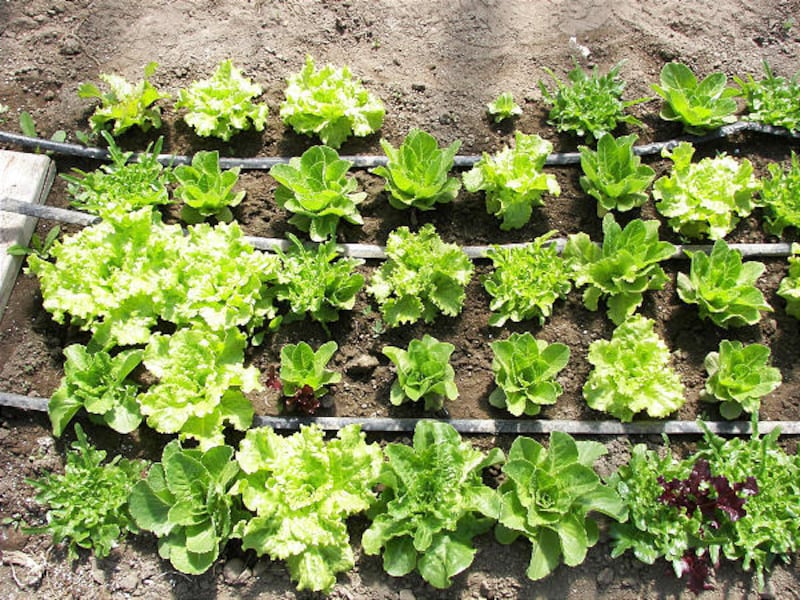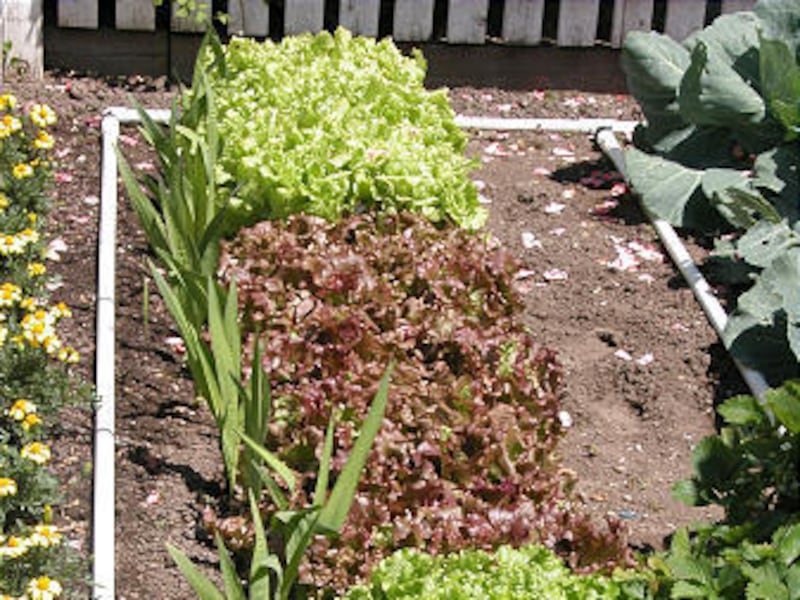Each spring, the National Garden Bureau selects one flower and one vegetable to showcase nationally.
This organization is dedicated to disseminating accurate information to help home gardeners successfully grow flowers and vegetables from seed.
As their featured vegetable for 2009, the group has selected greens. If you are wondering what vegetable we are talking about, it is a group of vegetables that are grown throughout the world under many different climatic conditions. These are consumed in their uncooked state as salads or cooked as greens.
Because this is such a diverse group of plants, I will take two columns to cover the subject. This week, we will focus on lettuce, one of the most popular vegetables from this group.
Fortunately, lettuce is easy to grow, for most gardeners.
For most of us, our conditioning has made us think of the supermarket iceberg-type lettuce. While we have eaten that in countless salads, it is very watery, rather bland in flavor and not very colorful.
Fortunately, that is not our only choice.
Lettuce (Lactuca sativa) is an ancient vegetable and is a member of the Asteraceae or daisy family. It was enjoyed as far back as 550 B.C., when Persian kings ate it. At that time, the lettuce plant looked much different than those we see today. They were likely collected as wild plants that resembled common weeds.
It is believed that the leaves grew on tall stems, much like the stalks that form on our modern varieties after they have bolted and gone to seed.
Assyrians and Egyptians thought the milky sap found in lettuce plants was an aphrodisiac. The long pointed leaves, similar to today's Romaine lettuce varieties, have been found in Egyptian tomb paintings.
Romans were particularly fond of a kind of lettuce found on the island of Cos in Greece. This type had stiff, erect leaves and is known as Romaine lettuce, named after the place where it was popular, or Cos lettuce after its place of origin.
Although it has been grown for thousands of years, it is still popular today and is likely the oldest lettuce variety still cultivated today.
There are hundreds of lettuce varieties available to gardeners. They include the leafy or non-head-forming types that are usually used as greens. Examples are varieties of bibb, leaf and Batavian lettuces, as well as the previously mentioned Romaine types.
The Cos or Romaine lettuce takes longer to grow but is more heat-tolerant than other kinds of lettuce. It is characterized by large, wrinkled green leaves that have a nice crisp texture and flavor. The tall, oblong leaves form upright, loose, cone-shaped heads.
Bibb lettuce forms whorls of open/semi-open leaves with a very dense, almost Romaine-like heart. The butterhead — or Boston lettuce — forms a semi-dense ball of leaves that are not as crisp as the bibb lettuce, but they have a wonderful buttery texture.
Leaf lettuce comes in a variety of colors, shapes and textures. It can be very decorative and actually works well as an ornamental planting.
Because there are so many kinds, the hard part is deciding which varieties grow best in Utah.
Summercrisp lettuce, also known as Batavian lettuce, is not as common in American gardens as other types of lettuce, but it makes wonderful crisp sweet flavored greens when young.
Summercrisp lettuce looks like leaf lettuce but form heads that are ready to harvest in 50 to 60 days. It is more heat-tolerant than other kinds of lettuce.
In Utah, we grow most types of lettuce as cool-season vegetables. The plants need a sunny location and fertile, well-drained soil. Plant seeds 1?8-1/4 inch deep, 2-3 weeks before the last frost. One common mistake is spacing the plants too close. Head lettuce needs to be 8-12 inches apart in the row with rows 12-18 inches apart. Leaf-lettuce plants should not crowd each other.
Lettuce must grow quickly, or it turns bitter and tough. Avoid stressing the plants with water or fertilizer. Many gardeners like to start transplants earlier in the season, so they can harvest a crop before hot weather comes.
A good transplant has 4-6 mature leaves and well-developed roots. It takes 5-6 weeks to grow transplants, so seeding inside now means plants will be ready about mid-April for garden planting.
Fabric row covers protect seedlings and transplants from frost and help the plants grow faster.
Lettuce varieties are going to vary in flavor, maturity and texture, according to local growing conditions. The following are recommended varieties for Utah, but there are many other varieties that are worth trying in your garden:
Head type — Crisphead Summertime, Salinas (my favorite), Great Lakes, Iceberg
Butterhead type — Buttercrunch (my favorite), Esmeralda
Cos (Romaine) type — Lentissima, Cimmaron Red Romaine, Italian Blonde Romaine
Leaf type — Red Sails (my favorite), Oakleaf, Salad Bowl
Larry A. Sagers is a horticulture specialist for the Utah State University Extension Service at Thanksgiving Point.




